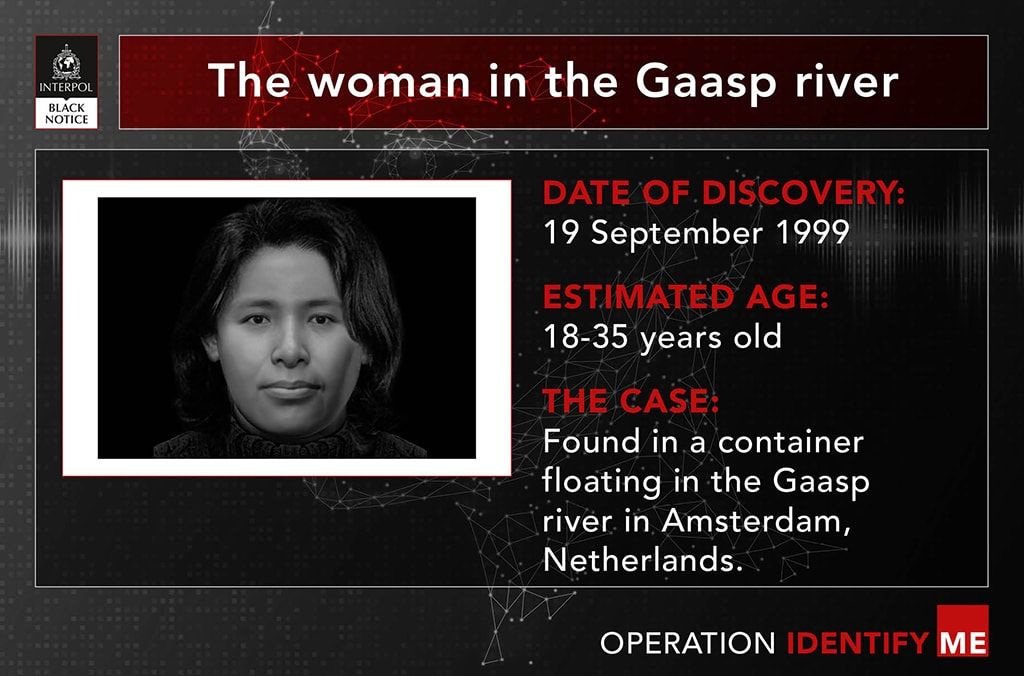Interpol seeks names of 22 women in Operation Identify Me
Listen 5 min Comment on this story Comment Gift Article Share
One body was found partially burned in a pit in southern Germany, still clad in a flowered skirt and belt with a gold buckle. Another was pulled out of a lake near Belgium’s La Plate Taille dam, where it may have been submerged for as long as two years.
The identities of these and 20 other murdered women, whose remains were discovered in Germany, Belgium and the Netherlands, are still unknown several decades later. But the few cursory clues gleaned about each of them are part of a new push — dubbed Operation Identify Me — by Interpol to learn who each victim was and possibly return them to their families.
Along with facial reconstruction and isotope analysis to determine where a woman might have lived, investigators hope that details such as clothing, jewelry or even tattoos may be enough to stir someone’s memory and bring them one step closer to solving each case. The information just released is part of a black notice alert typically only shared with Interpol member agencies.
Advertisement
“Not only do you have a victim who needs to be given their identity back, but there’s also a perpetrator at large,” Susan Hitchin, the coordinator of Interpol’s DNA unit, said in an interview.
While male homicide victims also go unidentified, women disproportionately suffer from gender-based violence such as sexual assault, human trafficking or domestic abuse, Hitchin explained. And the prevalence of international travel, migration and human trafficking means they may die far from home.
Here are some of their stories.
The woman in the river Return to menu In September 1999, a man on a boat near Amsterdam came across an industrial waste container floating in the Gaasp River. He brought it to shore, recognized the odor he smelled from his years as a fireman and alerted police. Inside, they discovered the body of a young woman believed to be between 18 and 35 years old. She was just under 5-foot-3, with dark brown hair, and she probably had been shot dead that summer. Advertisement Her body, still in a dark, knitted jumper and turtleneck, was partially encased in concrete. She “may have had partially Asian roots,” said police, who believe she most likely grew up in Germany, Luxembourg, France, Belgium, the Netherlands or other neighboring countries in Western Europe. Police found men’s clothing, including a white jacket with a logo sewn over a scorch mark, stuffed into the same container. It appeared bags of detergent may have been used to weigh down the container.
The woman in the well Return to menu The body was pulled from a rainwater well on the forest grounds of a rural Belgian cottage in August 1991. According to Interpol, it may have been there for as long as two years. Few clues were recovered with the victim; her hair and eye color could no longer be determined. She stood just over 5 feet, and Belgian investigators placed her year of birth between 1936 and 1961 — meaning she was as young as 30 and as old as 55 when she died. She was found wearing a knitted cardigan and a T-shirt potentially distinctive enough to spark someone’s memory, police said. It was yellow and blue striped, with an image of two surfers and three palm trees. Written across the front were three words: sun, surf, sea.
The body in the carpet Return to menu The boat skipper at the marina in Bremen, Germany, was the one who chanced upon the grisly bundle in July 2002. Inside was the body of a young woman, wrapped in sheets and other items, rolled in a carpet and tied up, then dumped in the Weser River. Injuries to her throat were still visible. Advertisement Officials estimate her age at death was between 22 and 35 — so she was born sometime in the decade between 1967 and 1977. She was nearly 5-foot-6, though with an “almost child-like build,” according to Interpol. She had fair skin, thick eyebrows and dyed — possibly permed — golden blond hair. Perhaps the personal items found on her body will be further clues as to her name and history: a silver earring with a red stone made in Kharkiv, Ukraine, that may have been sold abroad; a green neon butterfly hair clip probably from Russia.
The woman in the suitcase Return to menu In the fall of 2005, a local contractor in Schiedam, the Netherlands, pulled a red suitcase from one of the city’s canals. It had been floating for days, but locals had assumed it was trash. Inside was the body of a young woman, perhaps between 16 and 22 years old. Investigators believe she had died just a couple of weeks earlier. Advertisement She had brown eyes, light skin and brown hair dyed a little lighter. She was wearing blue sweatpants, a red shirt and socks with a picture of a duck on their heel. Someone had wrapped her body in a white duvet cover before placing it in the suitcase. Dutch officials believe she originally hailed from northern Scandinavia, Poland or Russia, before moving around Europe during her adolescence and eventually making her way to the Netherlands. Interpol said her teeth were in such poor condition that she probably had never visited a dentist.
The body in the bog Return to menu It was a mushroom picker working in a bog area near Cologne who found the body in October 2001. The victim had been there for at least four months — or as long as four years, investigators said. She appeared to have been of mixed African and possibly Mongolian descent, with curly black hair. She was probably in her 20s. She wore a purple jacket, light trousers and black leather shoes. A distinctive silver bracelet was found near her body. More than two decades later, police said, she remains “a mystery.”
Source: The Washington Post


